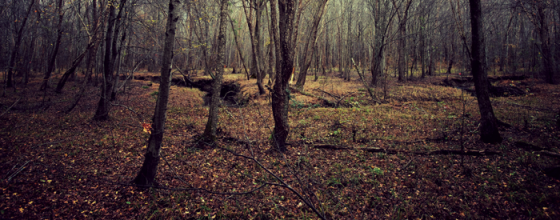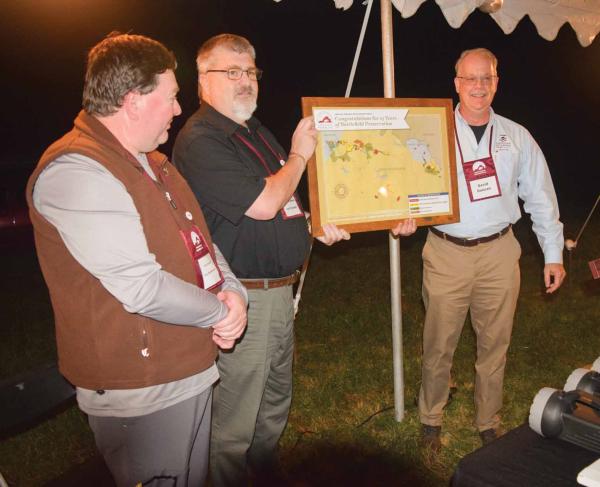Just How Wild Was the Wilderness?

Hallowed Ground, Spring 2013

Few Civil War sites evoke such indelible mental images as the Wilderness. Despite covering only about 70 square miles and offering remarkably poor visibility and maneuverability, it was the setting for two of the Civil War’s largest and most iconic battles — Chancellorsville in 1863 and the Wilderness in 1864.
Densely forested and dark, with visibility sometimes only a few feet, the Wilderness made for nightmarish fighting. Mature trees had been cut to power furnaces for processing local iron ore by early settlers and, by the time of the Civil War, thick second-growth trees and underbrush rendered some areas impassible. Accounts from both battles recount fires started during the fighting that consumed trapped, wounded soldiers. Since so little open space existed, the few sizable clearings became natural battlefields in both engagements.
Maj. Gen. Joseph Hooker’s army found the Wilderness nearly impenetrable. To avoid the tangle of trees, Union forces advanced eastward on three roads that met on a prominent plateau near the Zoan Church — in fact there is no higher ground travelling east until somewhere in continental Europe. Separated by dense forest, however, the three parts of Hooker’s army were virtually isolated from one another.
While the Federals tried to avoid the Wilderness, the Confederates took advantage of it. Certainly they had no illusions that they were operating in ideal terrain — “We were in a perfect jungle of rank vines and undergrowth,” observed Col. A.J. McBride of the 10th Georgia — yet they still found ways to exploit it. On May 1, Lt. Gen. “Stonewall” Jackson, concealed in the thickets of the Wilderness, was able to surprise the Union army, forcing Hooker to surrender the initiative and changing the course of the Chancellorsville Campaign. Jackson followed up the success the next day, utilizing the difficult conditions to facilitate one of history’s greatest surprise attacks.
Early in the morning of May 2, Jackson and his men broke away from the main line of the Army of Northern Virginia. All morning and well into the afternoon, Jackson’s long gray line marched on narrow, secondary dirt roads on a circuitous, 12-mile route to flank the Union army. Their movements were not entirely undetected, but were certainly underestimated by Union commanders — why would anyone go deeper into the morass, except in retreat?
When 30,000 screaming Confederates emerged from the woods along a two-mile front, the Yankees were utterly taken by surprise, with virtually an entire corps fleeing before them. Perhaps “impenetrable” is, partly, a state of mind.
Learn More: The Civil War in Virginia


